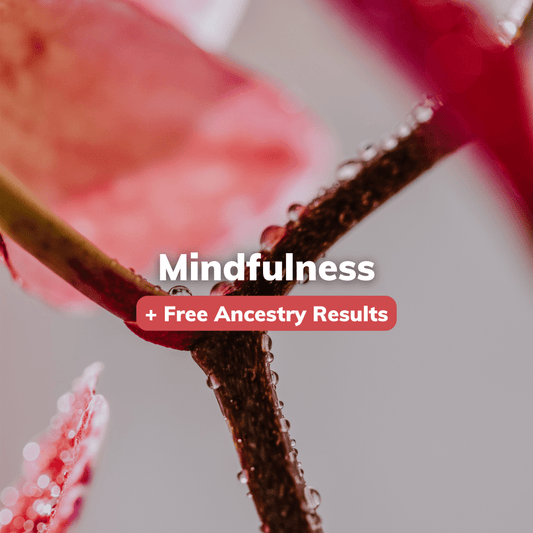
Importance of DNA / genetic testing
BioCertica Content TeamWritten by: Nermin Đuzić, M.Sc. in Genetics, Content Specialist
In our previous article, we explained what DNA is and why it is important, and you can consider it as a blueprint containing instructions for the growth and development of your body. However, our health and well-being are not purely determined by genetics, as there is a significant influence of our lifestyle and environment that shape us. This balance between our genetics and the environment is encapsulated in the concept known as nature vs. nurture. You can imagine these two as two different sides of the same coin.
Nature vs. Nurture
One of the oldest and the most famous debates in psychology is the one known as “nature vs. nurture,” questioning whether our genes (i.e., nature) or environmental factors (i.e. nurture) have a more significant impact on our appearance, behavior, and personality. [1]. Just to underline, the concept of nature vs. nurture applies to a myriad of human traits.
Scientists nowadays agree that both genetics and environmental factors affect a wide variety of our traits and behaviors. Indeed, nowadays, the actual question is not if but how these two factors interplay and affect our lives. There is a particular tradeoff between these two for any trait, as some are more genetically determined while others are more prone to environmental effects. The conclusion is that we should consider both sides important and contributing [2, 3].
For example, height is a trait hugely influenced by genetics. A child from “a tall family” may have inherited genes that would predispose him to be tall in the future. However, if a healthy and balanced diet does not follow his growth and development, he may never reach his maximum height determined by his genes. Since genetics is not enough in such cases for final appearance, we have to consider height as a product of nature and nurture interaction.
Now when you understand the nature vs. nurture concept, you know that you can influence certain environmental factors shaping you as an individual, as long as you may manage your lifestyle, habits, exercise routines, social life, etc.
However, you may ask yourself whether it is possible to get insight into your nature and influence it? And the good news is that today we can screen our genome and gather the information that will eventually help us estimate the effect of genetics and its combination with the environment (lifestyle).
Novel advancements in genomics technologies have made DNA tests extraordinarily cheap compared to the past and are widely available nowadays. By taking a DNA test, you get insight into your genetic makeup, (i.e. your nature), which will help you make better life decisions.
What is genetic / DNA test?
DNA testing, also known as genetic testing or screening, identifies changes in your DNA sequence [4]. In that way, you can learn more about your DNA and yourself and what makes you different from other people.
However, you may still ask yourself why it is important to know everything about your DNA.
Why is it important to have your DNA tested? What information does it provide? What can it tell about your health? Finally, what aspects of your health can you investigate by simply testing your DNA?
Genetic variants you inherit from your parents tell you the “nature” part of the above-mentioned nature vs. nurture concept. Furthermore, they will tell you if you have an increased or decreased risk for certain health conditions [5, 6].
Genetic tests give you more information regarding the genetic contribution to a given health condition or a trait. This may further influence your decision-making workflow regarding your lifestyle to achieve better professional, health, and wellness goals. But what does it mean in real life?
Well, imagine a person who is in doubt whether to take specific health treatment or not, or an average person that cares about his health and well-being, or imagine a just married couple who are planning to have a child. These are examples where genetic tests can help improve your health and well-being. However, whether positive or negative, the results of DNA tests are important and beneficial. Let’s explain.
If you get positive results, you will know which following steps to take, whether necessary treatment or additional screening. If you get negative results, you will know that there is no need for further examination. Finally, both outcomes will bring relief from uncertainty.
Benefits of genetic tests include the following:
- They help you better understand yourself and your health, as with understanding your genetic makeup, you know your risks for genetic diseases.
- They help you to learn about your origin and your ancestors
- They help you better take care of yourself and improve your lifestyle and well-being. For example:
- They help you to create your personalized fitness and wellness plans.
- They may help you create better nutrition and exercising plan that will suit your body needs
- They give you insight into weight loss tendency or likelihood for injury
- They can provide insight into mental health, cardiovascular health, sleeping habits, and more [7].
Genetic tests applications
If you look in the past, you will find that genetic tests were costly and unaffordable for most people. Thanks to the rapid development of novel technologies, including next-generation sequencing, genetic tests became widely affordable and available all around the globe, with results being ready in a matter of few weeks and even days. In the following few paragraphs, we discuss various aspects and applications of genetic tests.
Ancestry
One of the most interesting things for all people may be to discover their ancestors and origin. You may be curious to see if you have distant relatives from Africa, Asia, or Europe. This is exactly what a DNA test can reveal to you. In a matter of only a few weeks, you can go thousands of years back into the past and discover your lineage [8, 9].
Genetic risk calculation for common disorders
Probably the most interesting and valuable application of DNA tests is for estimating genetic risk for certain common conditions. Assessing genetic risk makes it easier to employ preventive measures for a given condition, even before its onset, thus avoiding the beginning of the disease altogether or improving chances for successful treatment.
The whole thing is done by estimating polygenic risk scores (PRS). PRS is also known under the names genomic scores (GS) and polygenic scores (PGS) or genomic risk scores (GRS). All these refer to the same term. Let’s explain this step by step.
Certain diseases like cystic fibrosis or sickle/cell anemia, hemophilia A are monogenic, which means that mutations in a single gene cause the given disease (i.e., change in the CTFR gene may cause cystic fibrosis). Indeed, there are hundreds of conditions affected by a single gene change, but the fact is that a relatively small number of people get affected by them.
On the other hand, obesity, high blood pressure, and related conditions affect a huge number of the world’s population. It’s because the onset of these conditions is controlled by a combination of many environmental and genetic factors, and they have a polygenic nature.
Many genes contribute to the total risk of being affected by a condition, whether increasing or decreasing it. If we want to calculate the genetic risk for a person to develop a specific condition, we have to investigate the risk contribution by many genetic variants across the genome. It often means analysis of hundreds, thousands, and even millions of variants.
The contribution of these individual genetic variants to the overall genetic risk is retrieved from genome-wide association studies (GWAS), which aim at identifying genetic variants being highly associated with a given trait or disease. These individual genetic variants’ contributions are then combined, and the cumulative risk is calculated, known as a polygenic risk score (PRS) [10].
PRS may help people discover if they are genetically more prone to develop certain conditions and get recommendations on adjusting their lifestyle to prevent them.
Pharmacogenomics

Pharmacogenomics is a relatively new and young scientific branch combining genomics and pharmacology. It explains how people respond differently to the same medication or treatment based on their genetic makeup [11]. Therefore, genetic tests may be helpful here to determine the proper medication or therapy or a dosage that will be helpful to a person affected by a specific condition, knowing their genetics.
Forensics
We are pretty sure that you have watched crime scene TV shows, where scientists put down all their knowledge and effort to use DNA technologies as a tool for solving criminal cases. DNA technology is the most reliable tool for comparison of suspected person’s DNA and DNA samples found at the crime scene (hair, blood, skin, saliva, etc.).
The most used type of DNA test in forensics is the DNA fingerprint test. This laboratory technique strives to link a DNA sample found on the crime scene and a suspect in a criminal investigation. This is done by comparing their DNAs. In that way, scientists can help determine whether the accused person committed a crime[12].
Paternity testing
Also, a popular type of DNA test is a paternity or maternity test, available to compare a child’s DNA molecules to the DNA of a potential parent to establish parenthood [13]. Besides being beneficial to solve parenthood uncertainties, it is helpful to provide support to the child.
Prenatal diagnostics
Prenatal DNA diagnostics tests are becoming more popular nowadays. Women decide to take care of their pregnancy and go for either a traditional approach via analysis of blood biomarkers or by choosing invasive tests like amniocentesis [14, 15].
Also popular is a non-invasive prenatal test (NIFTY) that uses a sequencing approach to isolate and examine a baby’s DNA from the mother’s blood. In these ways, it is possible to discover whether a future mother is bearing a baby affected by a wide variety of genetic disorders such as Down syndrome, Edwards syndrome, Patau syndrome, Klinefelter syndrome, and many others.
Get insight into your nature with BioCertica DNA tests
There is no doubt that DNA is a vital tool nowadays, as its discovery has revolutionized our lives in many ways, and it will continue to do so. Not only is it a blueprint of life, but it also provides a broad spectrum of answers essential to improve our lives. The genetic tests really can impact your life and give you clues on spending the rest of it on health and well-being.
At BioCertica, we perform a wide variety of genetic tests. By ordering our kits, you can gain more information regarding your:
- Ancestry
- Lifestyle
- Nutrition and Well-being
- Weight Management
- Fitness
- Cardiovascular Health
- Mental Health
- Skin Care
- Traits
Do not wait anymore! Order our genetic tests at an affordable price and learn more about your nature.
References
- Levitt, M. (2013). Perceptions of nature, nurture, and behavior. Life Sciences, Society and Policy, 9(1), 1-11.
- Schneider, S. M. (2007). The tangled tale of genes and environment: Moore's The Dependent Gene: The Fallacy of “Nature vs. Nurture.” The Behavior Analyst, 30(1), 91.
- Hayiou-Thomas, M. E. (2006). Going beyond nature versus nurture. Trends in Cognitive Sciences, 10(9).
- Burke, W. (2002). Genetic testing. New England Journal of Medicine, 347(23), 1867-1875.
- Eichler, E. E. (2019). Genetic variation, comparative genomics, and the diagnosis of disease. New England Journal of Medicine, 381(1), 64-74.
- Orr, N., & Chanock, S. (2008). Common genetic variation and human disease. Advances in genetics, 62, 1-32.
- Genetic Testing FAQ. (n.d.). Retrieved August 26, 2021, from Genetic Testing FAQ
- Royal, C. D., Novembre, J., Fullerton, S. M., Goldstein, D. B., Long, J. C., Bamshad, M. J., & Clark, A. G. (2010). Inferring genetic ancestry: opportunities, challenges, and implications. The American Journal of Human Genetics, 86(5), 661-673.
- Elliott, C., & Brodwin, P. (2002). Identity and genetic ancestry tracing. BMJ, 325(7378), 1469-1471.
- Choi, S. W., Mak, T. S. H., & O’Reilly, P. F. (2020). Tutorial: a guide to performing polygenic risk score analyses. Nature Protocols, 15(9), 2759-2772.
- Spear, B. B., Heath-Chiozzi, M., & Huff, J. (2001). Clinical application of pharmacogenetics. Trends in molecular medicine, 7(5), 201-204.
- Shrivastava, P., Trivedi, V. B., Singh, A. K., & Mishra, N. (2012). Application of DNA fingerprinting technology in forensic investigation. Int J Sci Res, 2, 1-4.
- Pena, S. D., & Chakraborty, R. (1994). Paternity testing in the DNA era. Trends in Genetics, 10(6), 204-209.
- Levy, B., & Stosic, M. (2019). Traditional prenatal diagnosis: past to present. Prenatal Diagnosis, 3-22.
- Alfirevic, Z., Navaratnam, K., & Mujezinovic, F. (2017). Amniocentesis and chorionic villus sampling for prenatal diagnosis. Cochrane Database of Systematic Reviews, (9).



